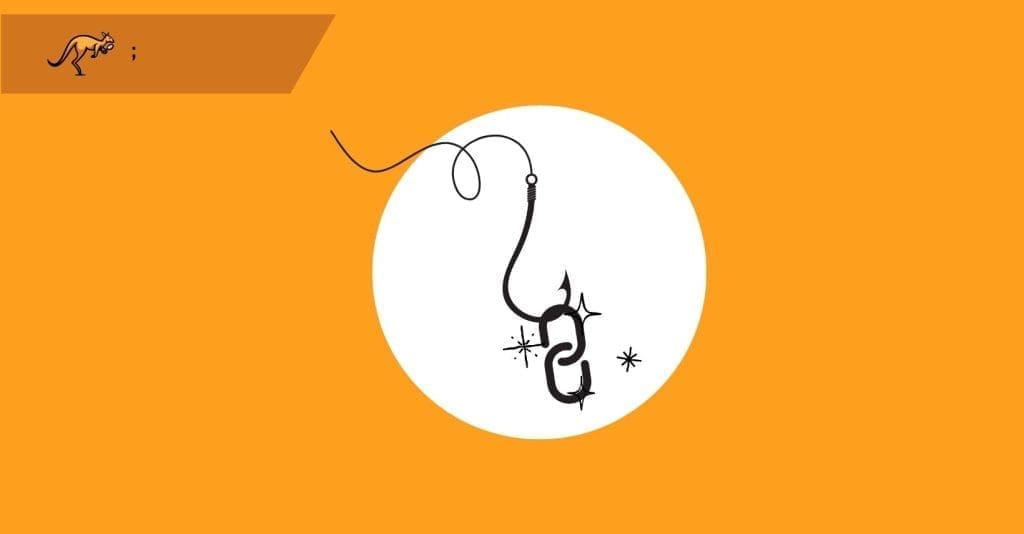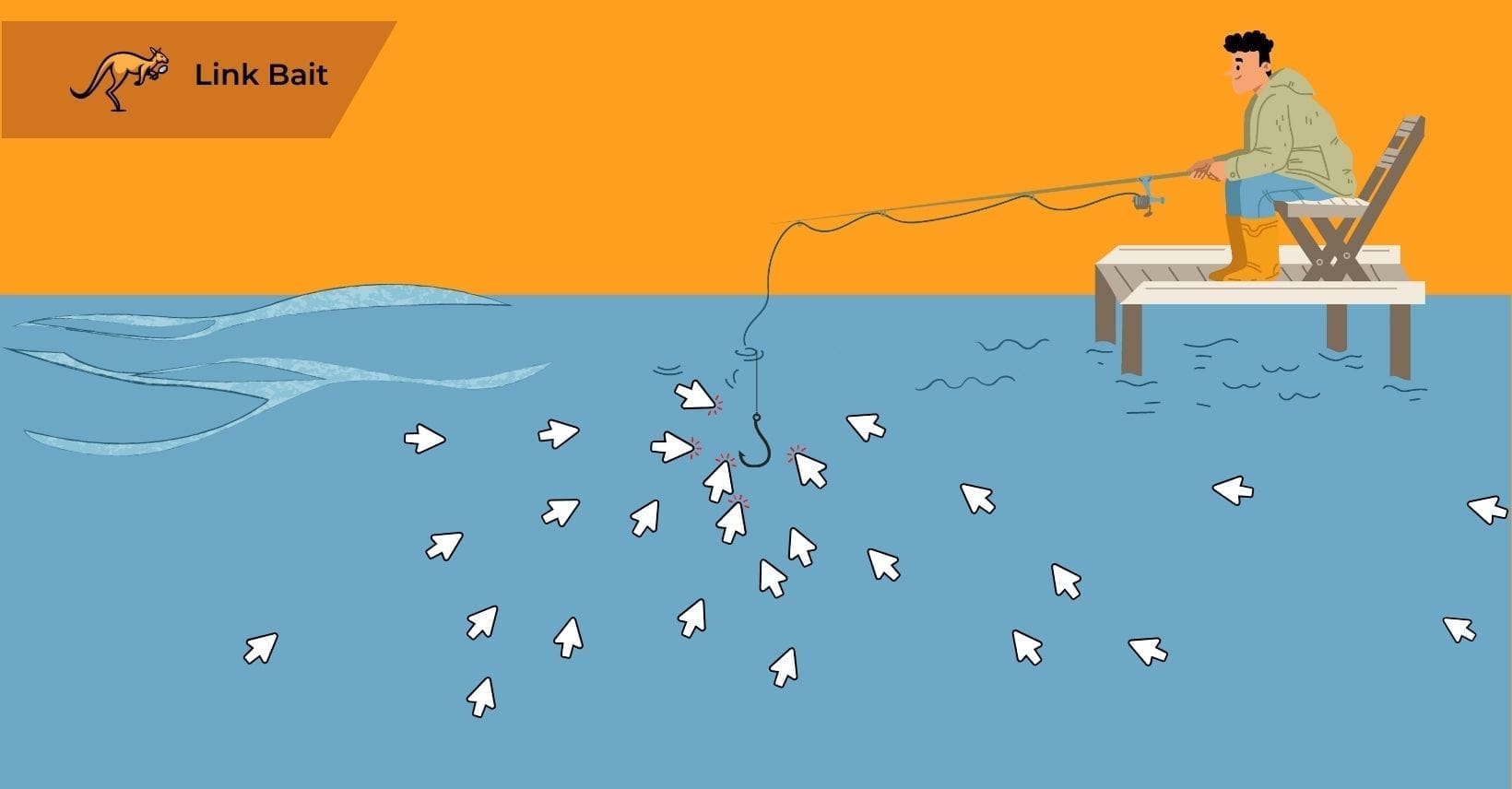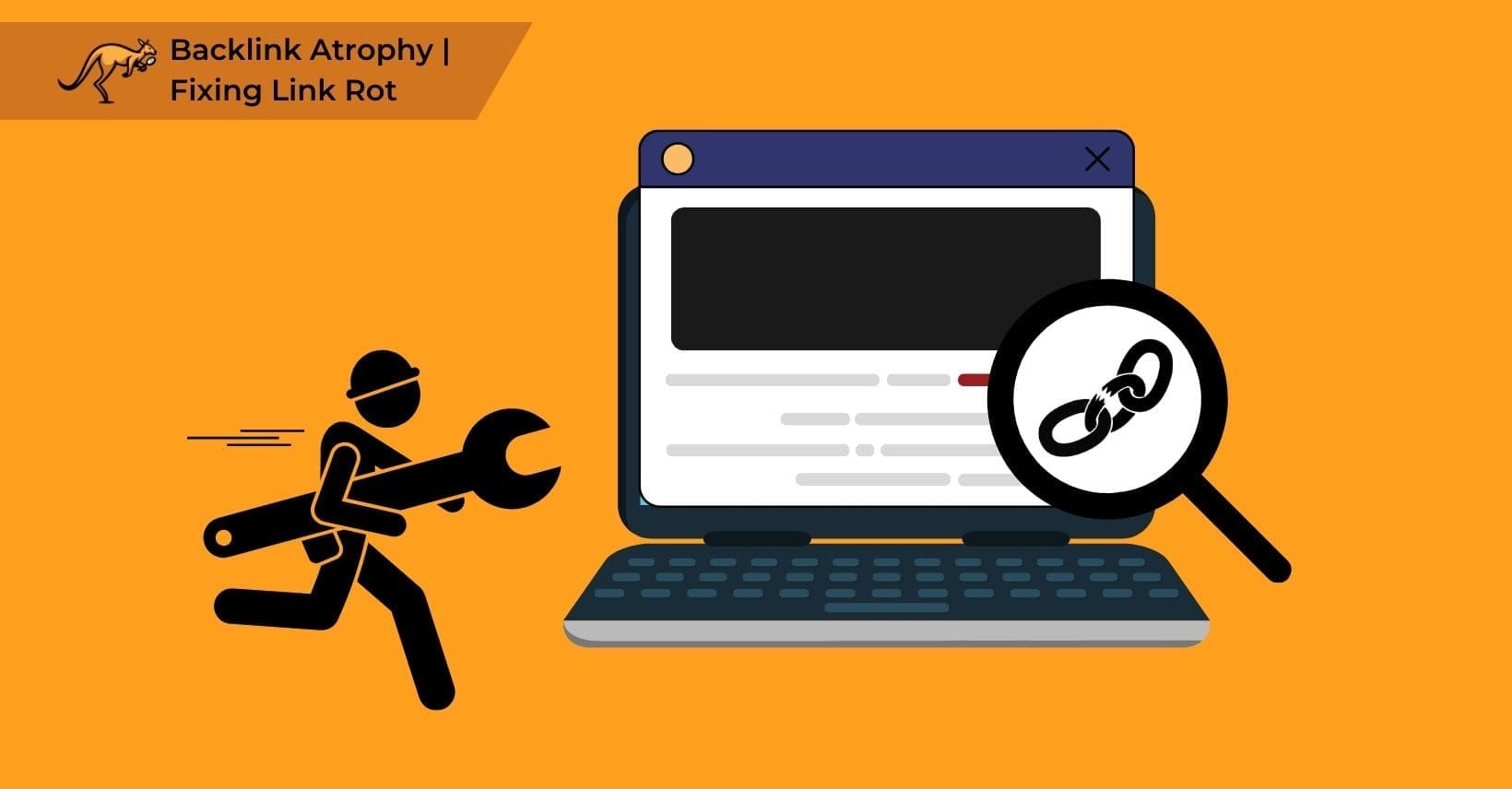Marketing to an exact target audience is difficult. While it is standard practice to distribute highly valuable content in a long-form style, it can be frustrating to create content that gets absolutely no traction.
Good quality backlinks are essential in SEO, acting as both a mark of approval and a mechanical boost to your rankings.
Unfortunately, with so many different competitors out there likely targeting the same links as you, it can feel incredibly difficult to approach a niche audience properly.
Thankfully, creating your own content does not just mean sticking to the same guidelines over and over again.
There is a particular technique that a content creator can use to create viral content that will get results, and that technique is link baiting.
If you have not heard of link bait before, then it can be an important concept to learn.
This breakdown will tell you everything you need to know about creating great link bait content and how link baiting works as a whole.
What is Link Baiting?
Link baiting is a strategic SEO technique that involves creating content specifically meant to attract backlinks from other websites, which helps improve search rankings and visibility without directly promoting products or services.
This is not content made for organic search visibility or even necessarily to advertise a product—the focus here is on creating content that will draw attention and gather additional links.
While this can sound like any content marketing strategy at first, link baiting content differs from regular content marketing because it prioritizes attracting backlinks over direct conversions, focusing on shareability and reference value rather than sales messaging or brand promotion.
A piece of link bait works by providing content so valuable, controversial, or engaging that other websites naturally reference it with backlinks, rather than directing users to specific pages or convincing them to feel a certain way about something.
Good examples of link baiting content can be things like:
- Infographics pages
- In-depth how-to guides
- Memes and viral content
- Interactive content
- Breaking news articles
- Evergreen content on blogs
Creating link-worthy content aims to naturally attract more backlinks, enhance its resource value or special insights. When executed successfully, this strategy—known as link bait—effortlessly facilitates the acquisition of backlinks, fostering passive gains in link equity and a substantial enhancement in organic search presence.
This seamless method of boosting online visibility leads us to explore the compelling reasons behind the strategic use of link bait in the upcoming section.
Why Should You Use Link Bait?

The main benefit of link bait is the fact that it usually draws in a lot of backlinks.
Even if the page itself is just an informative article or piece of interactive content with no ties to the rest of your site, you are still getting the benefits of those links.
Of course, it is important to think about link bait in the greater context of SEO and digital marketing. Using link bait well can provide advantages like:
Higher Authority
A well-constructed piece of link bait improves website authority by securing links from authoritative sources, which transfers domain authority to your own site and signals to search engines that your content deserves higher rankings across all pages.
Link bait is one of the best ways to get links from reputable sources, such as news sites or resources within your chosen industry.
The more high-quality links you get, the more the page has its rankings boosted, which increases the chance of other websites finding it. This boost also spreads throughout the rest of your own site, meaning greater benefits overall.
Higher Organic Traffic
The point of link bait content is to be something that makes users want to visit it. It might be informative, special , or even highly controversial – and that means that it tends to get more attention than a typical blog post about something mundane.
Google’s algorithms, along with the most popular search engine algorithms, mean that there are a lot of factors involved in how links are valued.
Either way, the combination of higher search rankings and an interesting subject can lead to more organic traffic, a portion of which may become paying customers.
Cost-Effective Link Building
It is easy to create cost-effective link bait since the content itself is mostly meant to earn contextual backlinks rather than promote exact products.
This means that there are fewer costs involved overall.
It is also important to remember that link bait is meant to gather very valuable backlinks, which often means that the return on investment is a lot higher than a standard piece of link building content.
Wider Audience Reach
The process of link baiting requires you to create content that has general value, and that means that more audiences may stumble across it.
A good piece of link bait is high-quality linkable content that gains popularity naturally, and that often means that it spreads outside of your original niche.
Even if this does not lead to many more direct customers, it does open up opportunities for even more links. Being exposed to a big audience can help a successful piece gain even more traction, which means better rankings in search results overall.
Creating Link Baiting Content
Link bait might sound relatively easy to produce on paper, but it can actually be surprisingly difficult, especially for small businesses. Creating link baiting content requires a exact set of characteristics and ideas, some of which can feel very different from regular content.
If you want more visitors and a greater online content presence, then link bait works. However, producing link bait can be a struggle until you understand what makes link bait work.
Worthwhile Content
If you are creating content for link baiting, you want something worthwhile. This could be a newsworthy topic or a piece including statistical data that other websites may want to reference.
Basically, you want to create something compelling that actually has a reason to be referenced by other people in other spaces.
This means that you want to choose topics that evoke a distinct feeling—for example, something controversial.
It does not matter what particular topic you choose as long as it is either timeless or incredibly relevant to current popular discussions.
You need link bait content that has an immediate presence among at least one well-defined audience; otherwise, your content might never gain any real traction.
Visible Value
Newsworthiness is one thing, but value is another. Many people misunderstand what value actually is in the context of content, assuming that it is something mechanical like the wording of the content or the length of an article.
In reality, value is exact to each person, and that can be hard to manage.
In the context of link bait, value refers to the value that a piece has to your audience. This could be opinion pieces that speak to your audience, data related to a exact industry, or just a blog post about something that your audience is legitimately interested in.
Most readers will want longer-form content, especially for topics that they have an invested interest in.
They also want content that can be long-form without sacrificing quality and ideally without using filler paragraphs to artificially extend the article’s length.
A great example of this is actually press releases for some major companies. They are creating articles that target their existing audience and the wider industry, are talking about something relevant to those groups, and are usually carried by the “hype” generated by whatever they are announcing.
Emotional Stimulation
An emotional response can be a great link building tool.
Viral content often comes from emotional responses – memes being funny, motivational articles being inspiring, allegations against celebrities stirring up fury, and so on.
Emotional stimulation serves as a powerful driver in successful link baiting because content that pushes emotional buttons increases the chance of gathering more attention and backlinks, especially when it resonates with the viewpoint of the majority while still standing out.
This is why controversial content can be so useful. It does not have to be vindictive – producing high-quality content about a hot topic and taking a contrarian stance can often be enough.
You want to give users a reason to visit your site and read the content, and playing with their emotions can work very well to get that immediate response.
However, you still need to be sure that your bait articles are not going to backfire.
It’s essential to balance controversy in your content; too much could alienate your customer base or undermine your credibility. Striking the right tone is key to maintaining your brand’s authority and trust. This careful consideration paves the way for understanding which strategies work as we discuss examples of effective link baiting that successfully capture audience interest without compromising professional integrity.
Examples of Effective Link Baiting
Link baiting can be an ingenious strategy to amplify your website’s visibility and enhance its backlink profile. Here are a few examples of successful link bait types that can inspire your content creation efforts:
- Infographics: These combine important data and eye-catching graphics, making them highly sharable across various platforms, from social media to industry blogs.
- How-To Guides: Detailed guides that solve common problems or teach something new can become invaluable resources that other sites are eager to link to.
- Viral Videos: Videos that capture attention through humor, emotional appeal, or intriguing information can rapidly circulate on social media, driving backlinks as they are shared.
- Data-Driven Studies: Original research and comprehensive studies provide valuable insights that are often cited by educational, news, and industry-specific sites, accumulating quality backlinks.
- Listicles and Top 10 Lists: These are easy to digest and often get linked due to their straightforward format and engaging content, especially when they cover trending topics or provide useful collections of resources.
Best Practices for Creating Link Bait
If you are looking to produce link bait, then you can’t just rely on regular link building strategies.
There are certain best practices that can really help when producing link bait for the first time, giving you an extra push toward making the right kind of relevant content.
Make Original Content
Rewriting another website’s content on your own web pages gives you links, but not to the extent that true original content can.
Making something purely original through your own original research will lead to a lot more inbound links and can cement you as an authority in that particular industry or community.
Make New Content
If possible, it is a good idea to target topics with untapped potential. Even if you are just gathering data from other websites to build your own article, putting it together in the right way can lead to a lot of received links.
For example, a new post that goes against a lot of conventional wisdom (making it controversial) by using hard data (making you an authority) can earn backlinks a lot faster than simply re-stating information found elsewhere.
Create Resources
Trying to produce special resource pages can be incredibly effective.
A lot of the best link bait comes in the form of a web page with a lot of useful information on it, such as a beginner’s guide to a complex topic or a breakdown of important statistics.
Producing a comprehensive resource can take time, but it leads to far more successful pieces that attract a lot more links and traffic overall.
You want to create value for other sites since this increases the chances of them adding links to your content, and a solid resource can be an evergreen way to earn additional links without doing any extra work.
An excellent example is how-to posts. A single post about doing something step-by-step can have huge link-gathering potential, especially if it can be useful in multiple industries or hobby spaces.
Use Data
Focusing on hard data and factual statistics can really help push your content into a more link-worthy state.
As mentioned before, this also makes you more of an authority in the eyes of your audience, which tends to make it much easier to build links over time.
Whether you collect data from other sources or do your own research, accurate data can be incredibly valuable for building more linking opportunities.
Target Popular Linking Topics
Look into what your target audience is linking to most often. This can give you some great linkbait examples to use for your own website content.
For example, if you run a shoe review site and a lot of people within your industry are linking to exact kinds of shoe-adjacent sites, pick out the exact related terms and trends that are getting the most attention.
While this can be tricky even with SEO tools, creating content that fits an already popular link target niche can lead to more backlinks for almost no additional effort.
Be Controversial
As mentioned earlier, it is important to create content that makes people want to link to it. Controversy is a great way for websites to get more traction, so going against the grain can be useful.
Controversial content generates effective link bait when you offer well-researched diverse opinions or play devil’s advocate over particular products without being inflammatory, which encourages discussion and citation from both supporters and opponents who want to reference your perspective.
Of course, you never want to be inflammatory or radical.
A properly researched article about the benefits of certain software or the issues behind a certain lifestyle trend can attract attention and link juice without tainting your website and brand.
You want to be controversial but not the subject of controversy. Never push away potential customers or destroy your own brand’s standing for the sake of link quality.
Use Your Target Audience
Promoting to your target audience across a range of platforms makes it easy to get your website out there without actually doing much.
Sharing content across multiple sites and platforms means that more people see it, which can snowball into more traction and, therefore, additional links.
Link baits work best when they can “hook” a subset of your audience, who then hopefully share it to hook more people.
Getting your website linked and shared in the right places makes a huge difference.
Use Paid Marketing
A paid media marketing strategy can be a good way to beat the limitations of search results.
Link baiting does not have to be purely organic, despite what some people in the SEO community might assume. You can always pay blogs or other sites to promote your content, which can get the ball rolling early.
Link baits rely on users organically linking to those pages, but you can kick-start the content and get it in front of more users by paying for promotions.
This also applies to things like ads on search engines or promoted content on social media. Being able to shove your content in front of more users, at least initially, can be a good way to ensure that your content does not get overlooked.
Rely on Outreach
Outreach is a valuable promotional tool, especially useful if you can establish yourself as an authority on a subject.
Reaching out to sites and content publishers that have a legitimate interest in an article can allow you to spread its influence further, sometimes even without paying.
For example, a well-researched article about a niche topic might interest creators in that niche. Outreach can ensure that they notice it, massively increasing your influence if they decide to use it as a reference.
Relying on Link Bait Content
Link bait is not going to solve every problem, and it still has limitations. However, when used correctly, it can be an incredibly effective way to boost your SEO without costing much more than a typical article would.
While you should never build your SEO structure assuming that link bait is going to succeed, you also should not ignore it as an option.
It can be dangerous to treat any SEO technique as the one-stop solution for your branding and internet presence, but link bait is a great choice simply because it is reliable.
The biggest factor behind link bait is the snowball effect. Once the right people notice an article, it can start to gain traction all on its own.
While generating momentum for an article might require initial effort, the appropriate content can rapidly expand across industries and markets, organically accumulating links from diverse sources. This process underscores the effectiveness of well-crafted link bait that operates autonomously, enhancing visibility and reach without ongoing intervention.
This capability to autonomously draw links is precisely why Searcharoo stands out for creating link bait. We specialize in developing content that not only captures attention but sustains it across platforms, segueing into our discussion on the advantages of choosing Searcharoo for your link baiting needs.
Why Choose Searcharoo for Creating Link Bait
Choosing Searcharoo for creating link bait means partnering with experts who understand the nuances of preparing content that naturally attracts links and drives traffic. Our team specializes in developing engaging, valuable content designed to make an impact. We use a data-driven approach, blending creativity with analytics to create link bait that not only draws attention but also aligns perfectly with your SEO goals.
At Searcharoo, we craft original, high-quality content to engage your target audience and enhance engagement. From compelling infographics to detailed guides and narratives, our content is designed to become a powerful magnet for links, effectively enhancing your SEO and expanding your digital footprint. Rely on Searcharoo to elevate your online presence with strategic link bait that extends your reach and improves your site’s visibility. let’sLet’s summarize the key strategies and benefits of employing link bait in enhancing SEO, as explored in the previous sections.





